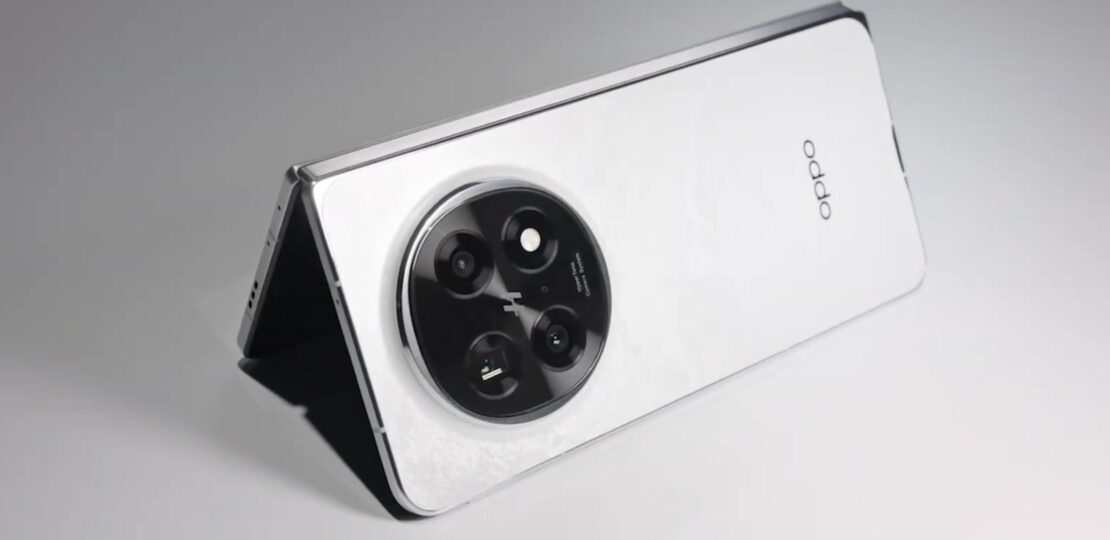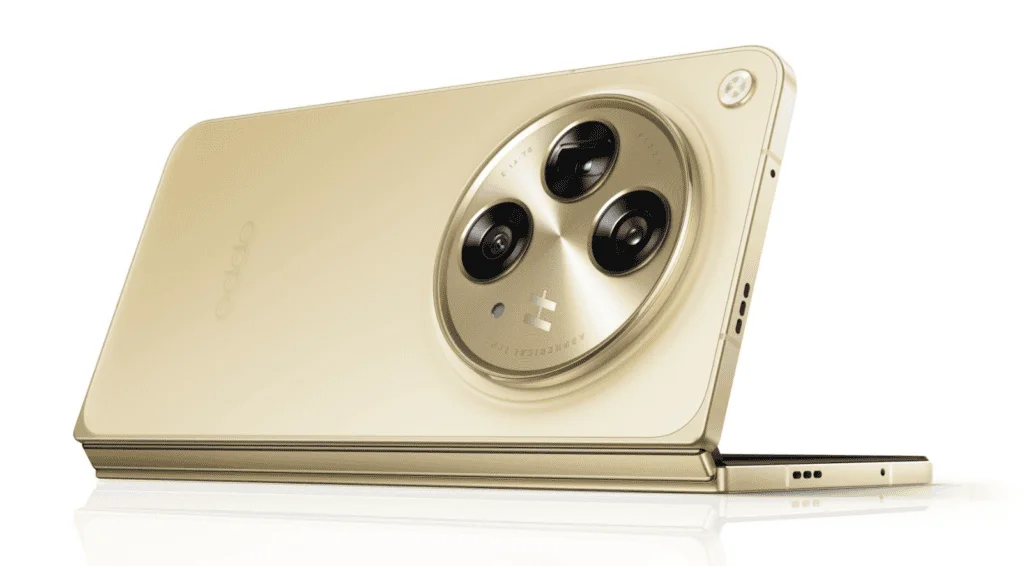
I’ve been following foldable smartphones since day one, reviewing and defending them because, honestly, I think they’re pretty awesome. But after seeing this new release, I’ve got a question. This is the OPPO Find N5, the thinnest foldable phone in the world.
There was some sketchy stuff with a double embargo, but now that it’s officially out, I can say that on paper, this phone is insane. It’s a flagship through and through—Snapdragon 8 Elite, up to 512GB of storage, 16GB of RAM, a 50MP primary camera, ultra-wide and telephoto lenses, and somehow, a combined 5,600mAh battery, all packed into something this thin.
What’s really amazing here is the build quality. When foldables first started coming back, I remember saying they’d only catch on if they could be as polished as a regular phone, just with the added bonus of folding into a tablet. That was the dream.
But the first foldables? They didn’t come close. Those huge bezels and awkward designs were anything but polished. Now, though, this Find N5 has basically nailed it. It almost feels like a regular phone—until you fold it. The outside screen is 6.6 inches, with a classic 21:9 aspect ratio and super-thin bezels all around. It genuinely looks like just any other phone when you’re looking at it from the front, with the only giveaway being a slight curve on the corners near the hinge.
And when it’s folded, it’s only 8.93mm thick and weighs 229g. For comparison, the iPhone 16 Pro Max is 8.3mm thick and weighs 227g. So, this foldable feels more like a regular phone that happens to fold in half.
When you open it up, it gets even crazier. This thing is insanely thin—like, almost comically thin when it’s fully opened. It’s one of those rare devices where you can’t help but marvel at the fact that there’s a fully functional computer inside.
Technically, the HUAWEI Mate XT, the trifold model, is a bit thinner, but this one still holds the title of the world’s thinnest book-style foldable. Both of these phones had to design custom USB Type-C ports to fit along the sides because there’s barely any extra room for anything else. But the screen inside? It’s the biggest we’ve seen in this style of foldable: 8.1 inches, 412 pixels per inch, 120Hz LTPO, with nice even bezels all around and just a small cutout for the selfie camera. It’s impressive.

This is easily the lightest, most stunning eight-inch screen you could actually carry in your pocket. And here’s the crazy part—it has more screen space than an iPad Mini. When I realized that, I was like, “Wait, we actually did it.” The original goal was to have an iPad Mini-sized device that you could fold up and fit in your pocket, and now we have it. This is more screen, it’s brighter, the pixel density is higher, the refresh rate is faster, and it looks better overall.
The only problem? It’s a square. So, while the N5 technically gives you more screen area, when it comes to actually using a large display, the iPad Mini is still the better choice. For example, if you pull up the same YouTube video on both screens, the iPad Mini is noticeably bigger, thanks to its more traditional shape. The virtual keyboard is also much larger on the iPad Mini, and for anything landscape—whether it’s web browsing, media, or apps—the iPad Mini still has a clear advantage.
So, that’s what led me to start thinking about this: is the book-style foldable really ready for prime time? Let’s revisit the original idea behind it—the initial theory of what could make this design successful. Early versions were definitely niche, and naturally, early adopters were the first to jump on board. But the ultimate goal here is for this to evolve into a regular phone that just happens to unfold into a tablet, right? If that happens, mission accomplished. No downside—makes sense for the average person.
In the early days, the drawbacks were pretty clear: they were twice as thick as regular phones, had twice as much bezel, and were twice as expensive. They also involved way more components, more research and development, and were way more complicated to make durable.
Now, imagine a future version that somehow solves all those problems. It’s just as thin and light as a regular phone, despite being foldable. It has the same battery life, flagship cameras, and even costs the same, despite having twice the screens. Even then, it could still be a tough sell, mainly because of the square shape. But, you’ve probably heard of Betteridge’s law of headlines, right? If not, it states that any headline that ends with a question mark can be answered with “no.” So, I guess that settles that. (laughs)
The real takeaway is that, at first, we thought foldables might be a game changer—like, maybe they’d be the perfect solution for everyone’s phone, doubling as tablets for all. But now it seems clear that they’re not exactly that. However, they still definitely have a place for people who want them. Think about flip phones—there’s definitely a market for phones that fold down to a smaller size. And, while the idea of folding an iPad Mini in half might seem odd and awkward, I still believe there’s potential for people who’d want something like that too.
Even with these compact foldables that unfold into square shapes, they still have a lot of value. Not everyone is just watching videos on their phones, right? With most of these book-style foldables, we’ve seen some smart window management tricks that really help with multitasking. This one’s no different. Being able to have two apps side by side, or even a third floating above them… I don’t use this feature all the time, but when I do—whether I’m referencing something on one side and writing a script or email on the other—it’s pretty great. So, this design still has a place, and there’s definitely a market for it.
Foldables aren’t dead. They’re just evolving and getting more refined. Some companies are really pushing the envelope, figuring out what they can do better than others, and the Find N5 is definitely one of the top performers in this category.
If you remember my first review of the year, I talked about the three big pillars for smartphones in 2025. This phone nails all of them: Snapdragon 8 Elite, silicon carbide battery, and ultra-bright displays. But in foldables, these things work a little differently. The chip is as powerful as expected, but in such a thin device, there’s only so much room for cooling. I actually found the phone can get pretty warm, and during early testing, it even overheated once—something I rarely see with new phones. It’s the first time I’ve experienced this with the Snapdragon 8 Elite, and it shows one of the downsides of such a powerful processor: it really needs equally powerful cooling.
That said, the performance is still impressive. The silicon carbide battery technology is a big win here too. Just to give you a comparison, my foldable phone of the year last year, the thicker Pixel 9 Pro Fold, had a 4,650 mAh battery. This one manages to pack in 5,600 mAh, thanks to the new battery tech. And of course, it’s an OPPO, so you get 80-watt fast charging and 50-watt wireless charging—basically flagship-level speeds.

This phone doesn’t just have one amazing display—it’s got two. The outer screen, when the phone is closed, feels just like any top-tier foldable flagship. It checks all the boxes: 6.6 inches, slim bezels, super responsive, high refresh rate, and a sharp resolution. Plus, it can get as bright as 1,600 nits, and when you’re watching HDR content, it can hit an eye-popping 2,450 nits—perfect for outdoor use with no issues.
Then, there’s the huge interior screen. This folding display can reach up to 1,400 nits and comes with a solid anti-reflective coating. The crease is barely noticeable, making it one of the most impressive internal displays you’ll find on any foldable.
One of the persistent challenges with foldables, even as they’ve gotten thinner, is fitting flagship-level cameras into the design. Traditional slab phones can fit the best camera tech, but foldables have to work with smaller sensors. While this model pushes the boundaries more than most, it’s still facing those limitations. It does have a bulky camera housing on the back with three lenses. The main sensor, though, is the closest it gets to flagship quality, using the LYT-700 sensor, which also shows up in mid-range phones like the Find X8, ROG Phone 9, and Moto Edge 50.
This phone is seriously impressive. It has a 50-megapixel telephoto lens with macro capabilities, plus an 8-megapixel ultra-wide. But even with all that, it’s just amazing. It’s the perfect example of how far we’ve pushed technology right now. I was kind of bummed when I saw OnePlus’ blog post saying they won’t be doing a foldable this year. I kept thinking, this phone would make such a great OnePlus Open. Now it looks like that’s not happening anytime soon.
But I’m curious to hear what you all think about foldables, especially in this shape. After using the N5, my main takeaways are: one, wow, we’ve actually done it. We have iPad Mini-sized screens in our pockets now. And two, the next big thing is getting the price down. So, imagine this form factor at a lower price point—what do you think? Let me know in the comments!
RELATED POSTS
View all


